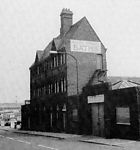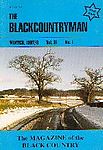Rolfe Street Baths was built around 1886. As Victorian families grew larger domestic bathing became increasingly difficult. The introduction of Public Baths, such as Rolfe Street, inevitably meant mass bathing for local communities, similar to Smethwick, became easier. Consequently, during the 1930s learning to swim became both compulsory for schoolchildren and fashionable for communities. For many, swimming was considered "good for body and soul".
Towards the end of the 1930s ballroom dancing was at its height and during the winter months one of the swimming pools was emptied and covered so it could be used as a dance floor. For the local community of Smethwick entertainments at Rolfe Street were always considered special occasions were people would dress up in their finest clothes and dance under the ornate cast iron arches.
Unfortunately, during the Second World War only the slipper baths remained open during the day as all buildings has to be "blacked out" by night. However, after the end of the War Rolfe Street was fully functional.
During the 1960s and 1970s towering flats with their own washing facilities resulted in the demand for public bathing decreasing. During this same period many of the shops and small businesses that surrounded Rolfe Street were bulldozed. Two decades on in the 1990s Rolfe Street was in a decaying state and the majority of iron arches were rusting and bare to the open sky.
Today, Rolfe Street proudly stands at the Black Country Living Museum. The exterior has been reformed to its former glory and the interior now fulfills the role of two exhibition halls and a Hall of Fame. Take a look around Rolfe Street and look at the cast iron arches. If you click on the search button and type 'Rolfe Street' you will find a selection of photographs from the past.
Rollover the captions in the box to see the available images in thumbnail format, click the caption to see the full-size image
| Reference: | 484 |
| Keywords: | MCOL Rolfe Street Baths Swimming Slipper 1880s 2000c 1930s 1960s 1990s |
| Archive Ref: | BCM Vol. 31 No. 1 pp. 32-33 |
| Updated: | 29/6/2001 10:58:15 |


